Surprising? No. Exciting? Absolutely. After a grand introduction by at the Apple event on September 10, 2019, the iPhone 11 is finally here. We may have known nearly everything about this new iOS device ahead of time, thanks to the usual surge of reliable leaks and rumors.
That said, even though Apple didn't have many bombshells this time around, the iPhone 11 is still an awesome upgrade over last year's iPhone XR at an even better price point. If you didn't watch the presentation, or you want a refresher, you've come to the right place. Here, we break down everything that's new with Apple's latest "budget" iPhone and dive into all the ways that the iPhone 11 is both similar and different from the iPhone 11 Pro and Pro Max.
iPhone 11 Highlights
- A brand new camera system
- The new colors
- Front camera has Slo-Mo, supporting "Slofies"
- Preorder Sept. 13 or buy on Sept. 20
- Cheaper than the XR! Prices range from $699–$849 based on storage options
- Will ship with iOS 13 pre-installed
Jump to a section: Dates | Storage | Prices | Body | Basics | Display | Performance | Battery | 12 MP Front Camera | Rear Camera (Photos) | Rear Camera (Videos) Audio | Sensors | Connectivity | Security | Software | In the Box
Important Dates
The iPhone 11 was announced during the "By innovation only" event in Cupertino, California on September 10, 2019, at the Steve Jobs Theater. It was announced alongside the iPhone 11 Pro and Pro Max, the new seventh-generation iPad, and new Apple Watch Series 5.
Apple is deviating from tradition very slightly when it comes to preorders and release. Preorders for iPhone 11 go live this Friday, Sept. 13, at 5:00 a.m. PDT (that's 8 a.m. EDT for us on the East Coast) at various retailers, major wireless carriers, and Apple.com. The iPhone will then release in Apple and other retail stores, and ship out, the following Friday, Sept. 20.
- Announcement date: Tuesday, Sept. 10, 2019 (10 a.m. PDT)
- Preorder date: Friday, Sept. 13, 2019
- Release date: Friday, Sept. 20, 2019
Storage Capacity
The iPhone 11 continues the storage capacity legacy of the iPhone XR. The base model comes with 64 GB of storage, with optional upgrades to 128 GB and 256 GB. Like all other iPhones, there is no support for expandable storage via microSD card. However, users can plug in a flash drive such as SanDisk iXpand Flash Drive to expand storage via the lightning port.
- Storage available: 64 GB, 128 GB, or 256 GB
- Expandable storage: no
Prices
Once again, as the lower-cost iPhone option, the iPhone 11 shaves the cost of the $1,000+ "Pro" iPhones. Many savvy consumers will be happy, though, that it also shaves the top off last year's iPhone XR (which started at $749 when revealed last year — it's still available to purchase, at a bargain-basement price of $599). The iPhone 11 will cost you just $100 more, starting at $699, and goes up to either $749 for 128 GB or $849 for 256 GB.
As with previous iPhones, you get a one-year limited warranty and up to 90 days of complimentary tech support with your purchase. You can extend that warranty to two years, and get additional features such as accidental damage protection (up to two incidents) and 24/7 tech support, by adding in AppleCare+ and AppleCare+ with Theft and Loss protection — at a cost, of course. AppleCare+, will cost you $149 for the iPhone 11 and bumps up to $249 with added Theft and Loss protection. Monthly plans are also available but will end up costing you more over time. If you use the iPhone Upgrade Program, this protection plan is automatically included in the pricing.
- iPhone 11 Price: $699 (64 GB), $749 (128 GB), and $849 (256 GB) plus taxes
- AppleCare+: $149 or $249 (or $7.99 or $12.99 each month)
Body
The 11 retains the aluminum frame found on the current iPhone XR, but the metal is now 100% recycled. Apple claims it uses the "strongest glass ever" on the back and the front of the phone, as it claimed last year. The rear glass allows the iPhone 11 to wirelessly charge via the Qi protocol.
Here's a big one, though — the 11 omits the "iPhone" text branding that appears on the back of every iPhone, leaving only the Apple logo in place. It's a clean look and probably helps balance that giant camera bump on the back (more on that later).
In terms of color options, the iPhone 11 is just as varied as the XR. This year, however, Apple axes two colors — blue and coral — for green and purple. While we're sad to see those colors go, we get it — Apple certainly wants to separate its new colorful iPhone line from last year's.
Keeping with Apple commitment to building eco-friendly products, the iPhone 11 uses arsenic-free display glass, has a mercury-free display, is brominated flame retardant–free, PVC-free, beryllium-free and is and its aluminum is recyclable and low-carbon.
- Frame: 100% recycled aluminum (7000 series)
- Back: one piece of glass with a glossy finish
- Finish: black, white, yellow, green, lavender, and (PRODUCT)RED
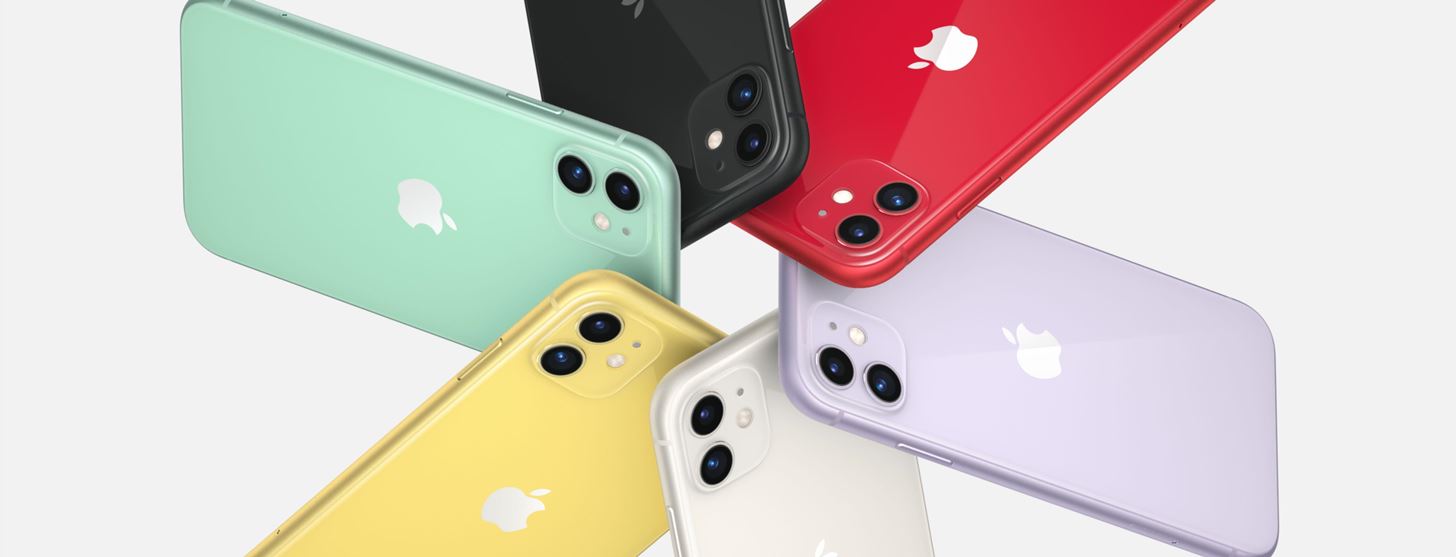
Basics
The iPhone 11 retains identical dimensions to its predecessor, even in weight (I guess the camera really doesn't add 10 pounds).
Like the 11 Pro and 11 Pro Max, the 11 is IP68-rated for water and dust resistance. What this means is that the iPhone 11 is dustproof and can be submerged in water at a maximum depth of two meters for up to 30 minutes. Technically, this isn't "waterproofing" just water-resistance, but it should put your mind at ease during a day at the lake.
- Height: 5.94 inches
- Width: 2.98 inches
- Depth: 0.33 inches
- Weight: 6.84 ounces
- Dust/water resistance: IP68 under IEC standard 60529
- Mobile network operators: AT&T, Sprint, T-Mobile, Verizon
The iPhone 11's environmental operating requirements, follow the same standards Apple has since iPhone 7 models.
- Operating temp: 32° to 95° F
- Nonoperating temp: -4° to 113° F
- Relative humidity: 5–95% noncondensing
- Operating altitude: up to 10,000 feet (likely more)
Display
The iPhone 11 display keeps the same dimensions as the XR — that means the familiar 6.1-inch display and 79% screen-to-body ratio. That will probably sit well with XR fans, as the "mid-sized" screen works as a good compromise between the smaller 11 Pro and 11 Pro Max.

Unfortunately for OLED fans, the iPhone 11 continues to use an LCD. It also retains the same resolution from the XR. Pixel-peekers are going to wonder why an iPhone in 2019 only has pixel density of 326 ppi, but XR fans can attest that this Liquid Retina display holds its own. We also get 625 nits of max brightness.
The iPhone 11 display still supports True Tone for an improved color temperature depending on the surround lights. Color temperature varies from phone to phone, so we'll probably have to wait until we get our hands on the iPhone 11 to test. It comes with a standard 60 Hz display, which was expected.
Dolby Vision allows you to enjoy HDR content from YouTube and Netflix. The iPhone 11's screen also has a wide color display via the P3 color gamut, oleophobic coating for fewer fingerprints, and 1400:1 contrast ratio.
Like last year's XR, the iPhone 11 drops 3D Touch for the new, Haptic Touch feature that offers similar functionality to 3D touch (perform using a long press) but without the same pressure-sensitive detection. These lower-cost iPhone models are no longer outliers, though, as the "Pro" models have also swapped 3D Touch for Haptic Touch.
- Screen size: 6.1 inches
- Screen resolution: 1792 x 828 pixels
- Pixel density: 326 ppi
- Screen type: Liquid Retina LCD
- Notch: yes
- Screen-to-body ratio: 79%
- Aspect ratio: 19.5:9
- Minimum brightness: Around 2–6 nits
- Maximum brightness: 625 nits
- Refresh rate: 60 Hz (120 Hz for touch-sensing)
- Color temperature: currently unknown
- 3D Touch: no
- Haptic Touch: yes
Performance
The iPhone 11 — in addition to the 11 Pro and 11 Pro Max — includes the A13 Bionic chip. Apple touts the A13 Bionic as both the most powerful CPU and GPU ever in a smartphone, complete with the third-generation Neural Engine which is better at performing machine learning. Apple also claims that the chip gives longer battery life, as optimizations have improved efficiency and the SoC only consumes the power it needs.
According to GSMArena, Apple included 4 GM of RAM with the iPhone 11. That makes sense, as the iPhone XS and XS Max, which also had two cameras, had the same RAM.
- Memory: 4 GB RAM
- Processor: Apple A13 Bionic
- Chip size: 7 nanometer
- Coprocessor: Third-generation Neural Engine (eight cores)
- CPU frequency: currently unknown
- CPU cores: six cores
- GPU: Apple-designed (unknown model)
- GPU cores: Four cores

Battery
The iPhone 11 comes with an hour of extra battery life over the iPhone XR, according to Apple. GSMArena puts the battery at 3110 mAh, though that's not confirmed on Apple's official spec sheet. Apple does provide some interesting stats: up to 17 hours of video playback, 10 hours of streamed video playback, 65 hours of audio playback, and up to 50% charge in 30 minutes with an 18W adapter or higher (not included in the box for the iPhone 11). It also supports Qi charging up to 7.5 watts.
- Battery: rechargeable lithium-ion
- Capacity: 3110 mAh
- Wireless charging: yes, Qi standard (7.5 W)
- Charging port: Lightning
- Wired charging: yes, USB PD (18 W)
Front Camera
Apple doesn't get specific about its improvements to Face ID this year, but those improvements are here. All we know for sure is that Face ID is "faster," and "easier to use," but most importantly, it works at multiple angles now.
We won't know until we test it out, but we're hoping that means Face ID now supports unlocking your iPhone while flat on a table. The promotional video for the iPhone 11 seems to indicate that this is possible:

The new front-facing camera gets a 12 MP lens, a big bump over the 7 MP sensors in previous iPhones. It also includes what Apple calls "slofies," slo-mo selfies. Slofies are possible thanks to 120 fps slo-mo shooting on the front camera. The iPhone's rear cameras have longed held "slo-mo" as an exclusive feature, so this is the first time the front cameras get a chance to shoot some video in slow motion.
- Resolution (Photos): 12 MP
- Resolution (Videos): 1080p and 4K
- Max frame rate: 60 fps for 1080p and 4K
- Slow motion: yes, 1080p at 120 fps
- Aperture: ƒ/2.2
- Zoom: currently unknown
- Flash: screen-based
- Image stabilization: likely software-based
- RAW support: no
- Object detection: bodies, faces, winks, tongues

Rear Camera (Photos)
While the iPhone XR currently supports a single — yet impressive — camera lens, the 11 upgrades the camera to include two lenses. While this would bring the lens count in line with last year's premium iPhones, the iPhone 11 and 11 Pro Max sport three lenses.
Apple includes the same lenses in the iPhone 11 that you'll find in the 11 Pro and 11 Pro Max, excluding the third zoom lens. These two cameras — one wide and one ultra-wide — are 12 MP each in resolution. You get 2x optical zoom out (0.5x zoom) and 5x digital zoom. Only the wide lens has optical image stabilization.
As you can see from images, the iPhone 11's cameras sit in a large "box" on the back of the phone. This box matches the color of the whole iPhone, unlike past all-black iPhone camera bumps. The rear mic and the brighter quad-LED flash are both housed in this box as well.

Even though the 11 is one lens short of the 11 Pro, we don't think you should be concerned about Portrait Mode quality. Portrait Mode is excellent on the XR's single lens, which makes us confident that Apple will only improve upon that success with stereoscopic cameras this year.
Apple made a big deal about Night Mode, a first for iPhones. The iPhone 11 uses "adaptive bracketing" to intelligently pull together a great photo in a dark environment. Night Mode kicks on automatically, thanks to a new Wide camera sensor and the A13 Bionic chip, taking multiple photos at once to create one, great shot.
- Resolution: 12 MP + 12 MP
- Aperture: ƒ/1.8 + ƒ/2.4
- Zoom: 2x out (0.5x zoom), 5x digital
- Flash: Quad-LED True Tone flash with Slow Sync
- Image stabilization: optical (wide camera only)
- RAW support: yes
- Lens cover: sapphire crystal
- Object detection: bodies, faces
- Formats: HEIF, JPEG, RAW
- HDR: Smart HDR
Rear Camera (Videos)
The iPhone 11's rear camera video seems to be a minor upgrade over last year's iPhones. That said, one great new feature is "QuickTake," an option that makes it possible to shoot a video by pressing and holding the shutter button while in photo mode.
- Resolution: 720p, 1080p and 4K
- Max frame rate: 30 fps for 720; 60 fps for 1080p and 4K
- Slow motion: yes, 1080p at 120 or 240 fps
- Time-lapse: yes, with stabilization
- Photos: 8 MP stills while recording 4K
- Zoom: 3x optical, 6x digital
- Flash: Quad-LED True Tone flash
- Image stabilization: optical (wide lens only)
- Lens cover: sapphire crystal
- Object detection: bodies, faces
- Audio: stereo sound
- Formats: H.264, H.65 (HEVC)
Audio
The biggest change to audio is "Spatial Audio," new to all three 2019 iPhones. This new tech simulates surround sound on your iPhone. We'll need to hear this one for ourselves before we can judge just how much of an upgrade it is.
- 3.5 mm headphone jack: no
- Stereo speakers: yes
- Mics: three total (on rear, front, and bottom)
- Max speaker volume: unknown
Sensors
Don't expect anything to change too much in the sensor department. From what Apple has announced, the iPhone 11 is going to bring the same sensors last year's iPhones had.
- Sensors: GPS, barometer, accelerometer, three-axis gyroscope, proximity sensor, barometer, digital compass
Connectivity
The iPhone 11 ships with Wi-Fi 6. This update to Wi-Fi 5 results in faster speeds with lower energy consumption, so having an router compatible with the technology will do wonders for the lifespan of your device.
Sadly, 5G has not come to the iPhone 11, though. Rumors point to 5G iPhones in 2020, so if that's a "must-have," you might want to wait. Bluetooth 5 and NFC will also make their way to the iPhone 11, just like the XR.
The iPhone 11 comes with a 2x2 MIMO (multiple-input, multiple-out) antenna design. We thought Apple might innovate more here, as a Barclays research note suggested the iPhone 11 could get a 4x4 MIMO. This new design would bring four antennas to the 11, versus the two found on the actual device, increasing connectivity speeds.
The Lightning port is also here to stay. We'd love to see USB-C on the iPhone, but this year, Apple stuck with Lightning for all three new models.
- Wi-Fi: 802.11ax (Wi-Fi 6)
- Bluetooth: 5
- NFC: yes
- Cellular: dual Nano-SIM card tray, Gigabit-class LTE
- Port: Lightning
- Other: iBeacon microlocation, AirPlay, AirDrop
Security
The iPhone 11 once again features Face ID, a powerful method of security powered by the TrueDepth camera. As noted above, Apple added improvements to Face ID this year, including support for scanning at multiple angles. However, it hasn't updated it's "one-in-a-million" failure rate, so take these updates as you will. You'll find your Apple Pay and Apple Pay Cash payments well protected by Face ID.
USB restricted mode will find its way to the iPhone 11 as well, stopping third-party devices from establishing a wired connecting to your iPhone and extracting your private information. You need a passcode to grant access when plugging your iPhone into a computer.
- Security: Face ID and USB restricted mode
Software
The iPhone 11 ships with iOS 13 preinstalled. If you're thinking about jailbreaking your iPhone 11 already, you'll need to wait until jailbreakers figure out how to exploit iOS 13.
- Software: iOS 13
Built-in features include Wi-Fi or cellular FaceTime video calls, FaceTime audio, voice over LTE (VoLTE), Wi-Fi calling, and full Siri support. A variety of language options, QuickType keyboard, Siri, dictation, dictionaries, and spell check, are also available.
The following audio files are supported — AAC-LC, HE-AAC, HE-AAC v2, Protected AAC, MP3, Linear PCM, Apple Lossless, FLAC, Dolby Digital (AC-3), Dolby Digital Plus (E-AC-3), Dolby Atmos, and Audible (formats 2, 3, 4, Audible Enhanced Audio, AAX, and AAX+) files. Video playback support includes HEVC, H.264, MPEG-4 Part 2, and Motion JPEG, as well as High Dynamic Range with Dolby Vision and HDR10 content.
Box Includes
Here's what you'll see when you open up your brand new iPhone 11:
- iPhone 11
- EarPods with Lightning connector
- Lightning to USB cable
- 5-watt power adapter
- Documentation
Just updated your iPhone? You'll find new emoji, enhanced security, podcast transcripts, Apple Cash virtual numbers, and other useful features. There are even new additions hidden within Safari. Find out what's new and changed on your iPhone with the iOS 17.4 update.




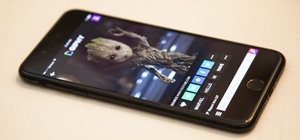


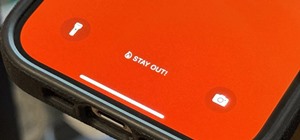






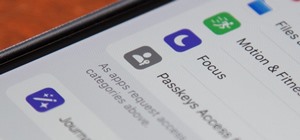
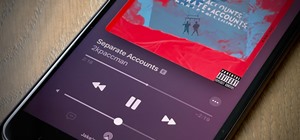
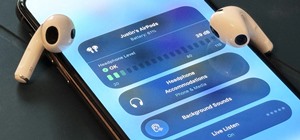

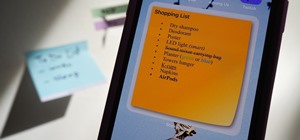
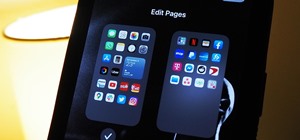



Be the First to Comment
Share Your Thoughts